Content
Discovered at the end of the 19th century by the German explorer of northeastern Europe and breeder A.I.Shrenk, the dwarf tulip serves as a natural and priceless adornment of mountainous, steppe and desert expanses. A wild plant named after its discoverer, the Schrenck tulip (Tulipa Gesneriana) is one of the finest members of the Eriostemones genus.
Today, low-growing border tulips adorn rakalia, rock gardens, lawns, flower beds and terraces, interior rooms (compositions, bouquets and individual plants in pots). On the territory of Russia, the plant is called "crooked", "low tulip", and it is indeed listed in the Red Book of the Russian Federation. Therefore, digging and forcibly extracting culture from its natural habitat is prohibited by law.
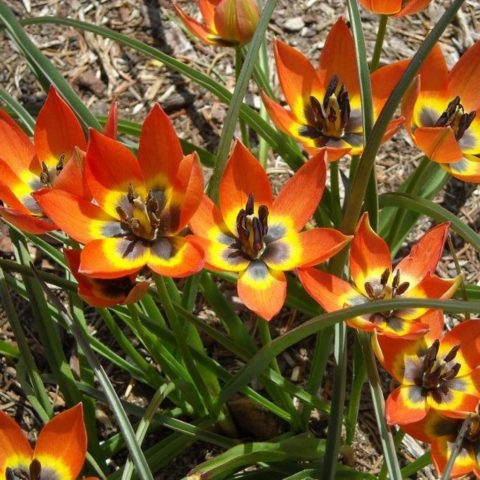
Delicate aroma, fragile appearance are the hallmarks of the first spring primroses, which include dwarf tulips.
Description of dwarf tulips
Among the numerous plants of the Red Book, the dwarf tulip compares favorably with the widest palette of bright colors and shades. Bulbous perennial grows in nature reserves at an altitude of 3 thousand m. The compact size of the plant is ideally combined with exquisite tenderness, fragility and noble grace of the flower:
- plant height - up to 10 cm;
- onion diameter - 20 mm;
- the shape of the bulb is ovoid;
- the covering of the bulb is golden brown scales with textured fringes;
- the leaves are earthy, linear, slightly wavy at the edges;
- leaf color - bright or silvery green;
- number of leaves - 3 pcs.;
- leaf length up to 12 cm;
- leaf width up to 1 cm;
- number of peduncles - 1 pc .;
- the shape of the bud - bell-shaped in the process of opening;
- flower shape - convex towards the top and narrowed towards the base, star-shaped with pointed petals;
- the texture of the petals is velvety;
- the color of the stamens is from purple to light beige;
- flowering period - late May or early June;
- flowering period - 2 weeks.
A unique feature of low-growing dwarf tulips is that the color and surface of the inner part of the petals can be radically opposite to their outer. This allows the human eye to perceive the multifaceted color palette of one miniature flower from different angles.
In the morning hours, a plant with closed petals can be bright scarlet in color, but by noon, a blossoming bud pleases the eye with solar overflows of orange and yellow shades.
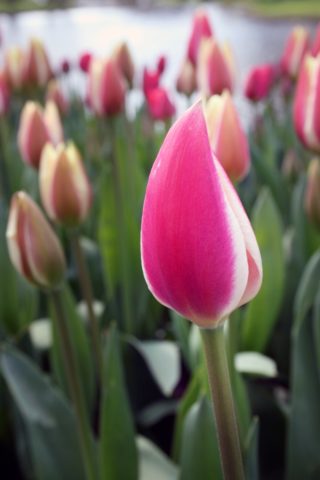
The miniature size of dwarf tulips makes them the most popular and demanded elements of landscape design for framing beds with blooming spring primroses.
Are there dwarf tulips in the Red Book of Russia
The wild miniature Schrenck tulip is a rare representative of the Russian flora, which is on the verge of complete extinction for a number of reasons:
- uncontrolled plowing of land;
- wildfires;
- forced digging of bulbs by a person for medical purposes;
- grazing livestock in protected areas;
- environmental disasters (contamination of water, air and soil with industrial waste);
- the commercial destruction of plants for the purpose of sale.
In order to preserve the endangered population of early low-growing tulips, a list of measures has been developed on a national scale:
- monitoring and patrolling protected areas during flowering;
- visual campaigning for endangered dwarf tulips;
- de facto ban on the collection of flowers, seeds, bulbs;
- administrative penalties (fines) for violation of environmental protection measures.
Today, graceful dwarf tulips are artificially cultivated in arboretums, botanical gardens, nature reserves and parks.
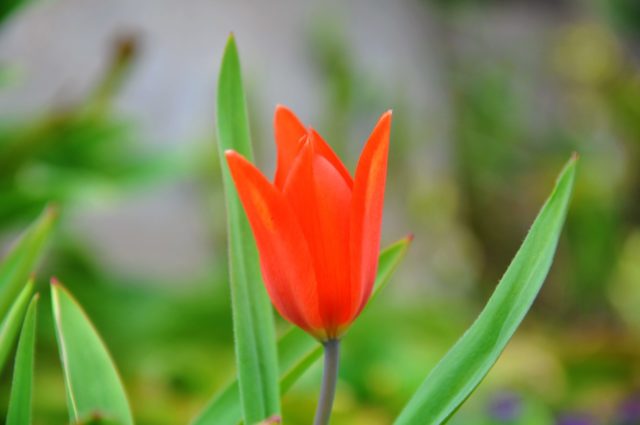
The bright color of a dwarf tulip is like a signal of help and the need for protection
Dwarf tulip varieties
In its natural habitat, the dwarf tulip displays a riot of vibrant colors. In May, the steppe, desert and mountain expanses are painted in white, orange, yellow, burgundy, scarlet, purple colors.
Recently, low-growing curb tulips are very popular in various stylistic directions of landscape design, thanks to the large number of unique varieties and varieties.
Blue Baby variety (Baby Blue)
The parade of dwarf tulips opens with a delicate and uncommon variety Blue Baby, which amazes with its dark purple, even color of buds. The violet-heavenly Baby Blue bashfully hides the petals under the foliage, since the buds are located literally near the ground.
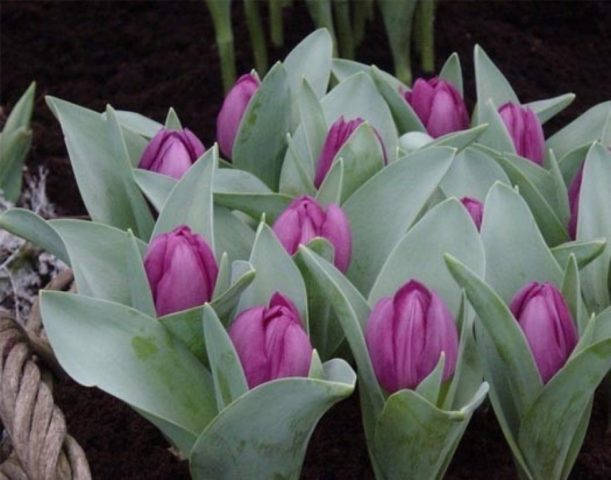
The bloom of a Blue Baby tulip is a mesmerizing sight that amazes with the rich glow of purple buds
Yellow Baby variety (Yellow Baby)
The dwarf terry tulip Yellow Baby, bred in 1971, in sunny yellow color, still pleases gardeners with unusually bright colors. But at the same time, it does not lose its relevance.
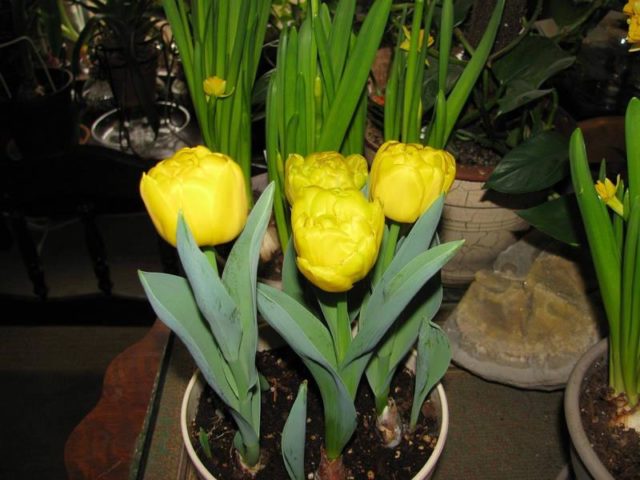
A miniature tulip variety Yellow Baby is great for growing in indoor pots, it, like a small sun, illuminates the room with a bright yellow color
Alba Coerulea Oculata cultivar (Alba Kouralia Okulata)
The unique variety Alba Coerulea Oculata is translated from Italian as "blue-eyed baby". The central inner part of the petals is painted in dark blue, which is further outlined by a purple pistil and six bluish-blue stamens with yellow pollen. The white color of the main part of the petals evokes memories of the snow-white mountain peaks - the birthplace of the classic dwarf tulips.
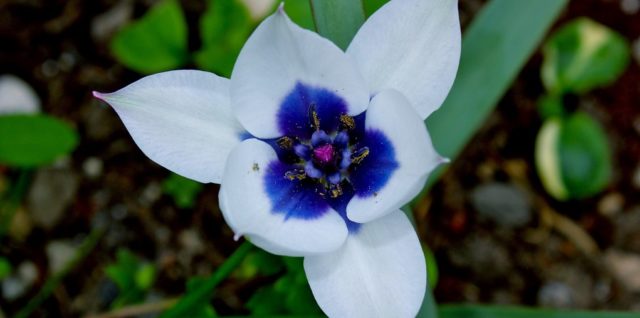
The graceful and touching tulip cultivar Alba Coerulea Oculata is associated with the inaccessible and exotic edelweiss from the high mountain peaks.
Variety Tet a tet (Tet-a-tet)
Dwarf double tulips of bright scarlet color with the romantic name Tet a tet are the perfect present for the first declaration of love. As if made of the most delicate red velvet, fragile petals in the shape of "kisses" invite you to touch and enjoy the incomparable scent of spring, purity and freshness.
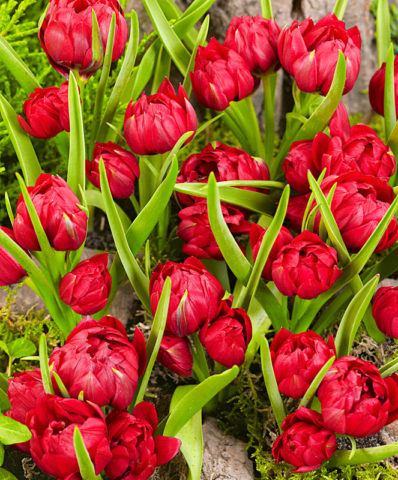
Tet a tet is one of the most solemn and mysterious varieties of small tulips, which is used with great success in landscape design to decorate low spring curbs and lawns.
Persian Pearl variety
The secret of the magical Persian pearl is hidden in the delicate and fragile petals of the Persian Pearl dwarf tulip. The alternating combinations of lilac and lilac-pearl petals look incredibly beautiful and sublime. Natural magic does not end there. If you look at the inner surface of the petals, the central part of the flower illuminates like a solar disk, the accent on which is made by the same yellow stamens with honey-colored pollen.

Persian Pearl has a characteristic inflorescence shape, which, with the grace of its lines, evokes associations with the refined East.
Eastern Star variety (East Star)
Eastern Star - an amazing flower in the shape of a star of rich lilac-pink color with exquisitely pointed and curved petals, will not leave indifferent any person in love with flowers. The delicate and fresh scent of spring captivates and beckons, as do the bright yellow hearts of fully open inflorescences towards the sun's rays.
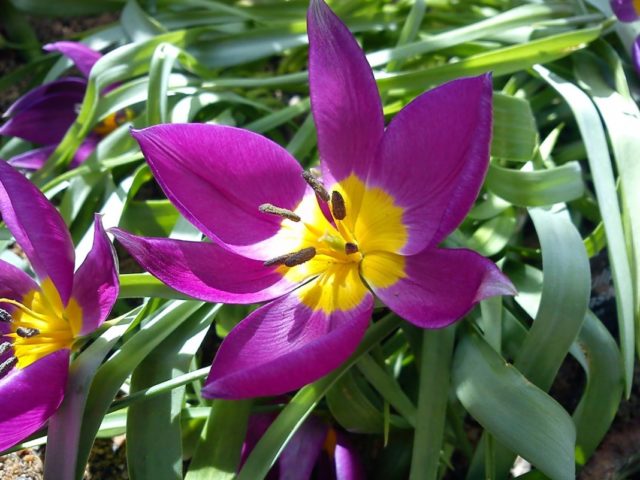
When opened, the Eastern Star resembles a bright star, not only because of the bright yellow color of the inner central part of the petals, but also due to the extraordinary shape and curves of the six individual inflorescence petals.
Planting and caring for dwarf tulips
Experienced gardeners recommend cultivating and planting low-growing curb tulips in the fall. The optimal time is late September or early October.
Selection and preparation of the landing site
For miniature tulips, you should choose a permanent "residence" with the following characteristics:
- sufficient natural light;
- the presence of drainage to remove excess moisture from the soil;
- a sufficient level of acidity, looseness and fertility of the soil;
- the most preferable is loamy and sandy loam soil;
- the presence of sand, caustobiolite, clay in the ground is desirable.
When planting flowers in pots, containers or other containers, a prerequisite is the presence of high drainage and a universal substrate for bulbous crops.
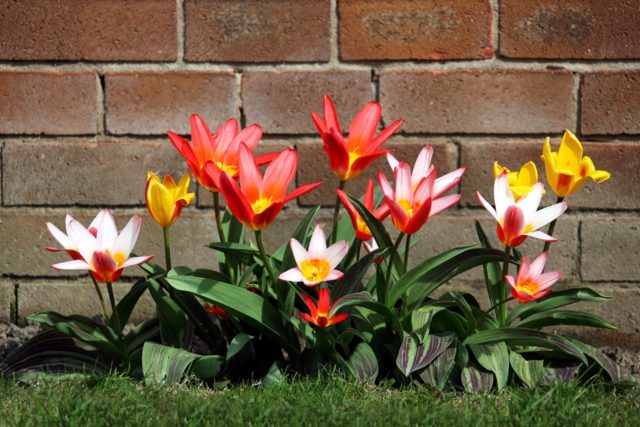
Miniature flowers are light-loving plants that should be planted in open areas
Landing rules
To get healthy and beautifully flowering mini tulip plants, you should adhere to the basic rules of planting a culture:
- a small hole with a diameter of up to 6 cm is enough for the location of the bulb;
- the step (distance) between the holes should be up to 10 cm;
- before planting, the bulb should be treated with a weak (0.5-1%) solution of potassium permanganate (processing time - up to 40 minutes);
- when placing the bulb in the ground, it is not necessary to press down strongly and press the planting material.
To get a beautiful or spectacular lawn or a contrasting spring border, you need to plant bulbs in groups (10 or more). The bulbs are planted in open ground in mid-autumn, and with the arrival of the first frost, the planting site is mulched with peat, branches, fallen leaves, and other materials at hand.

The bulbs should be planted before the onset of the first frost to ensure a comfortable winter for the plant and high-quality flowering in spring.
Watering and feeding
Fertilizing plants with mineral fertilizers is one of the main rules for caring for dwarf tulip varieties. The soil should be fertilized immediately during the melting of the snow cover and during the formation of the color (bud). During flowering, phosphate fertilizers are ideal.
Regular watering in symbiosis with loosening and timely removal of weeds will ensure a sufficient level of oxygen supply to the root system, which has a positive effect on the quality and time of flowering.
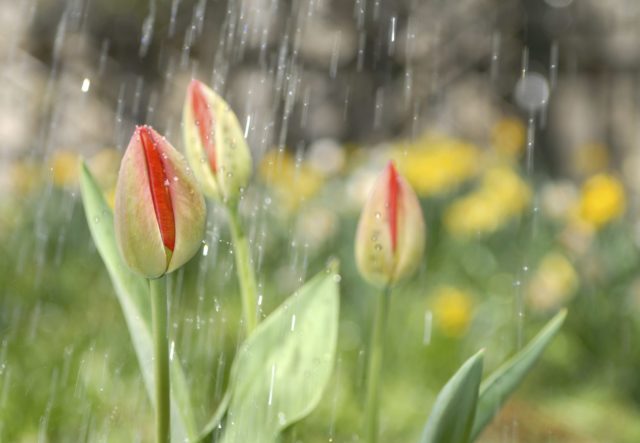
Timely watering of mini tulips is especially important during the period of bud formation.
Reproduction of undersized tulips
Dwarf tulips can be propagated using seeds and bulbs. Gardeners need to be aware that varietal distinctive features may not be preserved or not fully preserved during seed propagation.
Reproduction with bulbs is the most optimal and common variant of the plant for lily crops. In the middle of autumn they are dug up, carefully examined, sorted out, sorted and seated.
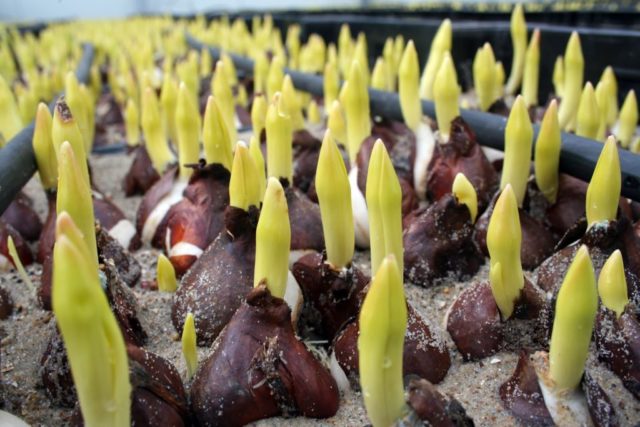
Low-growing tulip cultivars should be propagated with daughter bulbs to ensure that the quality characteristics of the cultivar are maintained.
Diseases and pests of dwarf tulips
Dwarf tulip varieties are considered the most persistent representatives of liliaceae, for which only gray or white rot can be dangerous if the soil is excessively waterlogged. Infected bulbs must be destroyed when found, so as not to infect healthy plants with a dangerous disease.
In the cold season, small rodents can “feast on” tulip bulbs. To protect the plant from death, planting material is planted in special nets.
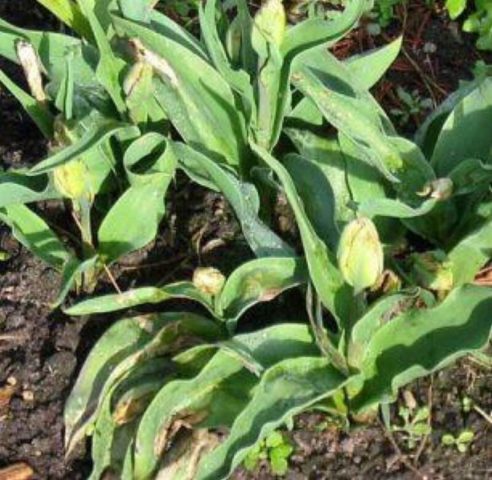
"Diseased" plants can be dangerous, therefore, if rot is found on individual individuals, they should be immediately destroyed
Photo of dwarf tulips
Low-growing curb tulips are some of nature's most amazing creations.With the arrival of the first spring warmth, they color flower beds and rock gardens, garden beds or delight with their flowering in indoor pots. Having planted plants from the Red Book - dwarf tulips on your personal plot or at home, you can enjoy the riot of natural colors and the delicate aroma of freshness of real spring.

In the beds and in separate containers, dwarf tulip varieties look actual in combination with other primroses
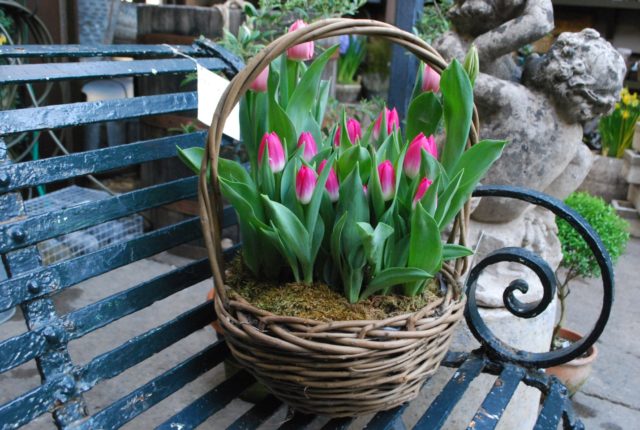
With the help of simple compositions and installations from low-growing varieties of tulips, you can create amazing and peaceful corners for rest and relaxation.
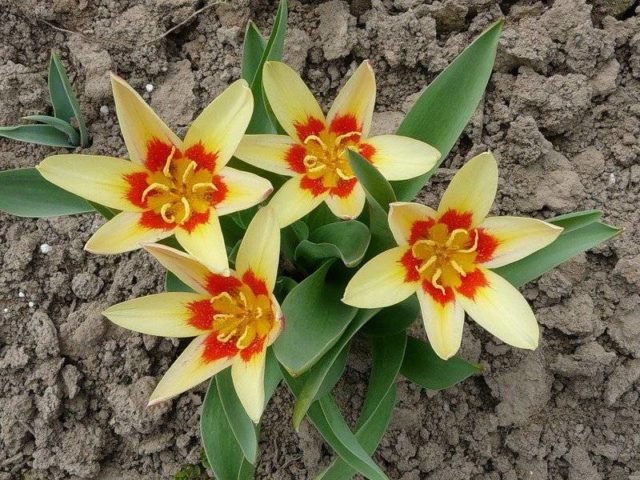
Low-growing tulips - colorful and bright stars
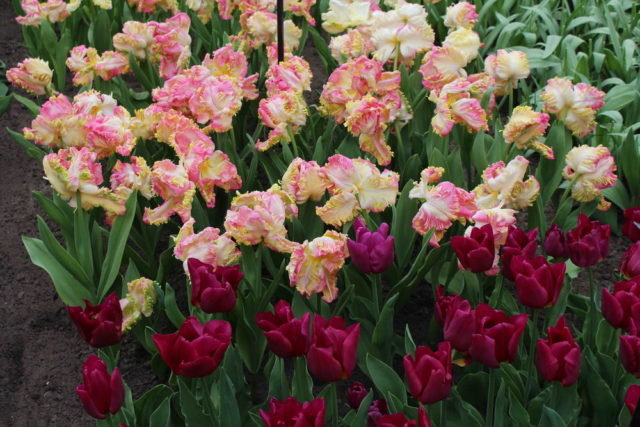
Miniature varieties - graceful and gentle inspiration from nature itself
Conclusion
The dwarf tulip is a popular primrose that is commonly used as a staple in landscaping between March and May. To make the local area a source of inspiration on spring days, you can set a bright and joyful mood with the help of miniature tulip beds. Touching lawns with plants of one variety, which contrast with spectacular borders or hedges of a different variety and color, will always raise the tone and give joyful moments of communication with wildlife.








